“Two roads diverged in a wood, and I-
I took the one less traveled by,
And that has made all the difference”
-Robert Frost
The paths one chooses can make a big difference. That’s the ultimate takeaway from a September 2018 California Court of Appeal (Third Appellate District) decision, Department of Corrections and Rehabilitation v. Workers’ Compensation Appeals Board and Dean Fitzpatrick (see text of the decision at the bottom of this post).
The legal issue at stake in the case, which involved a 2011 date of injury, was whether Labor Code section 4662(b) creates a separate path for determining permanent total disability in addition to the requirements of Labor Code section 4660. The court concludes that “section 4660 governs how the finding and award of permanent total disability shall be made in “accordance with the fact” as provided in section 4662, subdivision (b).”
Over the last decade there has been great interest in the California workers’ compensation community over how the workers’ comp rating schedule can be rebutted and how severely disabled workers may be rated. Cases have provided some clarity on how the rating may be rebutted by medical opinion (Almaraz and Guzman) or by vocational evidence (Ogilvie and Dahl).
And, to complicate matters further, new language was introduced for post-January 2013 dates of injury.
The working assumption of many in the workers’ comp community has been that Labor Code 4662(b) provides an independent path for a determination that a worker is permanently totally disabled, i. e. 100%.
Labor Code 4662(b) played a prominent role in WCAB decisions such as Boatright v. Argonaut Constructors (2010) 2010 Cal.Wrk. Comp. P.D. LEXIS 463, Hudson v. County of San Diego (2010) 2010 Cal. Wrk. Comp P.D. LEXIS 479, Khatayan v. BMW of Concord (2012) 2012 Cal. Wrk.Comp. P.D.LEXIS 356, Baldridge v. Swinerton (2010) 2010 Cal.Wrk. Comp. P.D. LEXIS 271, Dearden v. Hatfield Buick (2010) 2010 Cal.Wrk.Comp. P.D. LEXIS 281, and a host of others.
In some cases citing 4662(b), findings of 100% were based in part on vocational expert testimony. But there have been a number of cases where findings of 100% disability under 4662 was not based on vocational expert testimony and rather appears to have been anchored upon medical expert opinion only or the WCJ’s assessment of the medical opinions. Examples of those include Anaya v. Bay Area Carbide (2016) 81 CCC 1061, G4S Secure Solutions v. WCAB (Simone) (2015) 80 CCC 823, Mehas-Wipf v. Corning (2012) 2012 Cal. Wrk.Comp. P.D. LEXIS 370, and Bruce Ayers v. Granite Rock (2012) (ADJ 3896064). In some of these cases the treating doctor or QME argued that the worker was 100%. In others the WCJ looked at worker testimony, medication use, and other factors and essentially “topped off” the rating at 100%.
Fitzpatrick puts the validity of some of those cases that did not involve vocational expert evidence into question.
In Fitzpatrick, Mr. Fitzpatrick, CAAA and the WCAB took the position that 4662(b) provides an independent path. The ratings on Fitzpatrick’s heart (75% WPI and adjusted rating at 97%) and psyche (40% WPI and adjusted rating of 71%) came to 99% using the Combined Values Chart. However, the psych QME opined that Fitzpatrick was permanently totally disabled on psyche alone . Based on this, the trial judge found permanent total disability “according to fact”.
In his report on reconsideration the WCJ noted a WCAB decision adopting the “two paths” approach, Coca-Cola Enterprises v. WCAB (Jaramillo) (2012) 77 CCC 445 (writ den). In Jaramillo the WCAB had stated that “the specific constraints of Labor Code 4660(b)(1) and (2) are not necessarily applicable to a determination of permanent total disability “in accordance with the fact” pursuant to section 4662″.
Interestingly, apparently there was vocational expert evidence but that was not relied upon by the judge in making his determination that Fitzpatrick was permanently totally disabled.
But is 4662(b) a path totally independent of 4660?
Not so, says the Court of Appeal, sweeping aside a CAAA argument that a 2012 Labor Code amendment, LC 4660.1 (effective January 1, 2013), should be considered in determining the application of 4662(b) in a pre 2013 context. How the 2012 amendment will affect the application of 4662(b) for post 1/1/13 claims is left by the court for another day.
The Court of Appeals holds that “Section 4660 addresses how the determination on the facts shall be made in each case for injuries occurring before January 1, 2013.”
Effectively, this means that 4662(b) “according to fact” determinations on pre-2013 injuries are subject to the standards set forth in the Ogilvie case (Ogilvie v. WCAB) (2011) 197 Cal.App.4th 1262), Dahl case ((Contra Costa County v. WCAB )(2015) 240 Cal.App.4th 746) and their progeny.
Finding that the issue was not previously raised, the Fitzpatrick court avoids determining the standards for adding ratings rather than using the Combined Values Chart. However, it will not surprise me if the next fertile issue for appellate guidance is in a post –Kite situation involving a dispute over whether ratings should be added or subject to the CVC.
What are the take-aways from Fitzpatrick? The principal take-away is that parties litigating pre-1/1/13 injuries will need to tighten up their attention to how they propose to rebut the PD schedule.
Parties who are arguing permanent total disability will want to make sure that they obtain vocational expert analysis re vocational feasibility/amenability to rehabilitation rather than simply relying on a QME or judge to make the conclusion that the worker is totally disabled. Labor Code 4662(b) remains a path to 100%, but that path ultimately runs through the post-Ogilvie track.
Here is the Fitzpatrick decision:
WorkersComp4662(FitzpatrickCase)
Stay tuned.
Julius Young
www.boxerlaw.com



